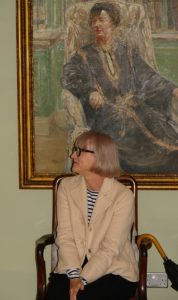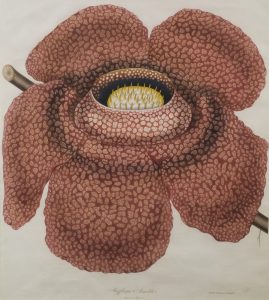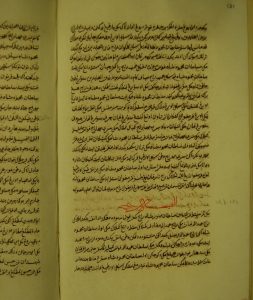Raffles in Java
On Tuesday 30th July, we welcomed Dr Sarah Tiffin to lecture on “Raffles and the Course of Empire: Decoding Ruin Imagery in The History of Java”. The lecture, reflecting some of the material developed in her publication, Southeast Asia in Ruins: Art and Empire in the Early 19th Century, considered how the images produced for Sir Stamford Raffles’ book, The History of Java (published 1817), were manipulated to reflect the current western fashion and fascination for ruins. The ruin had become a popular motif in the picturesque imagination as a symbol of past greatness and civilisation. But these ruins needed to be depicted in a certain way. Dr Tiffin compared original drawings undertaken in Java with the engravings, some of which were produced by the eminent artist and engraver, William Daniell. The engravings had been altered to add atmospheric backgrounds and details which added to their appeal according to picturesque conventions. It was fascinating to be taken on a journey to see how Java was being presented to the western population and how that might affect people’s views of the country and its people.

Sir Stamford Raffles played a significant part in the British administration of South-East Asia, serving in the region from 1805 to 1824, apart from a short interlude in England in 1817, when he wrote The History of Java and married his second wife, Sophia Hull. On his final return to England, he became involved in many Societies in London, including setting up the Zoological Society of London in 1825 and becoming its firs president in 1826. His interest in botany and zoology is reflected in this engraving, Flower of Rafflesia Arnoldi, which Raffles presented to the Royal Asiatic Society in 1826.

After his death the Society also further benefitted from Raffles’ interest in Asia when, in 1830, his widow presented Raffles’ collection of eighty Malay and forty-five Javanese manuscripts. Many of his Malay manuscripts are now available to be seen on our Digital Library. They include RAS Raffles Malay 03: Hikayat Rangga Arya Kuda Nestapa, a Panji story telling of the adventures of Inu Kartapati, Prince of Kuripan, and RAS Raffles Malay 18: Sejarah Melayu, a copy of the A.H. 1021 (A.D.1621) original with the inscription “C. Wilmott 1812”.

Of course, the images on the Digital Library are much clearer than the one above and you are able to manipulate them, zooming in and out at will, and automatically turning over the pages of each manuscript. I would encourage you to go and ‘play’ and discover, and be delighted by, some more of the Society’s collections when you visit the site.
